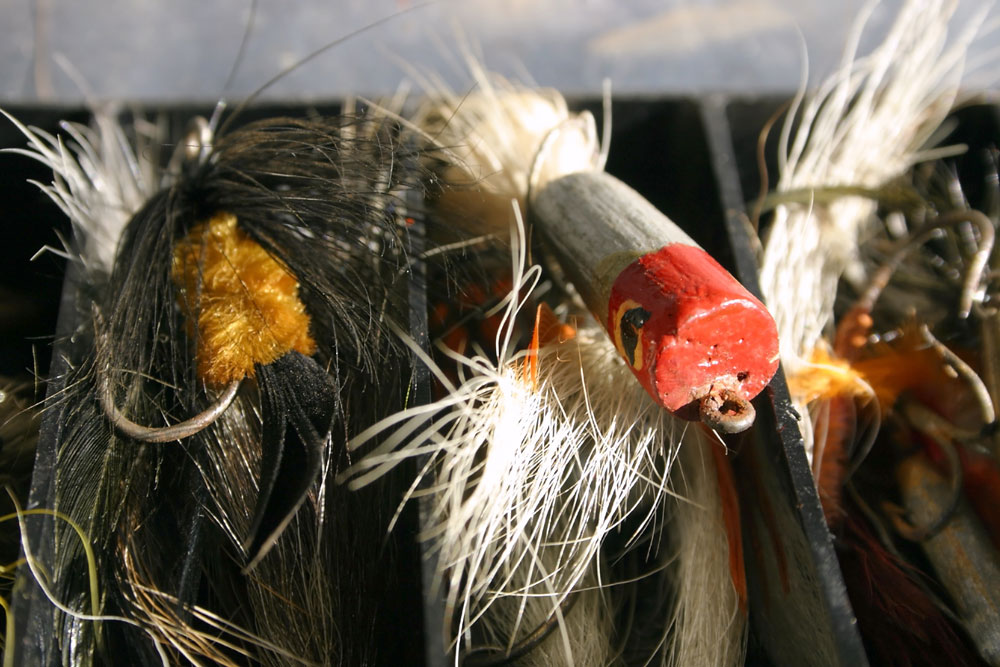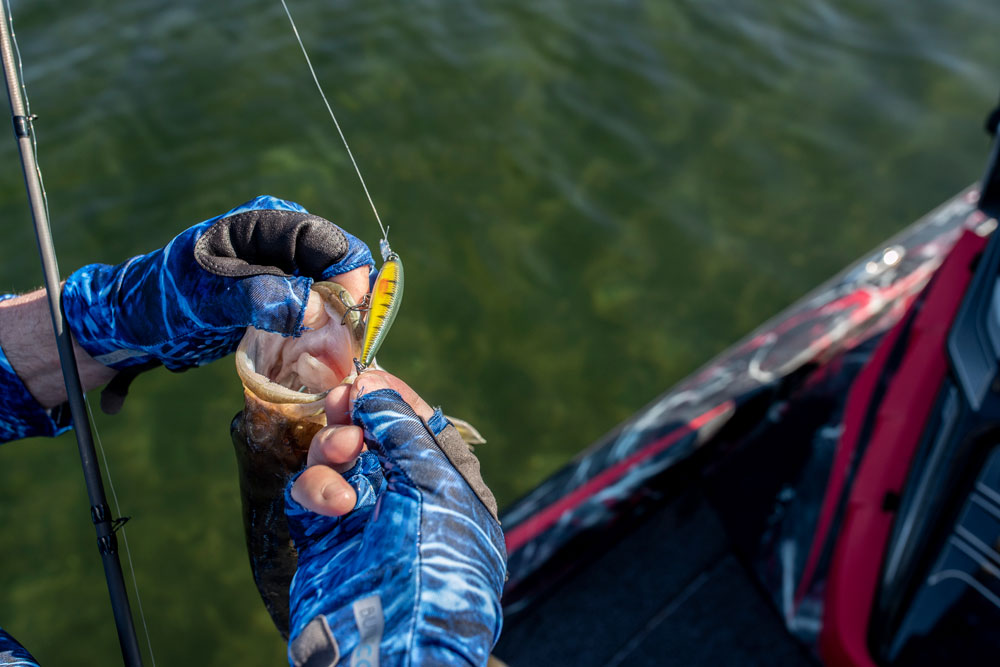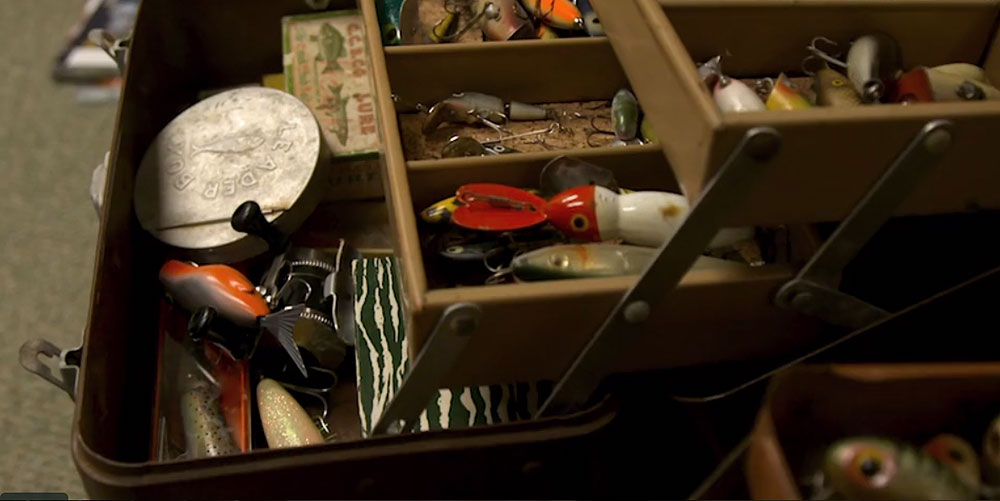Whether you’re a ley line fisherman or an expert angler, you probably have several worn-out lures in your tackle box. Lures often make it through the season looking slightly worse for wear, but, with some inexpensive restoration techniques, you can recover the look and function of a brand new lure.

Why Restore?
Lures can be expensive, so taking the time to repair your collection at the end of a season is a smart investment. You can even use these techniques to restore lures you find tangled in netting or discarded on docks.
Restoring found or old lures can be a quicker and easier process than creating your own homemade fishing lures, although both practices can help you fish on a budget. If you’re considering making your own lures, restoring old lures can be a good starting point to learn about how lures work.
Remove the Unsalvageable
Before you get into cleaning the lure, it helps to remove the hooks and split rings. After a full season of fishing, the hooks are often dull and unsatisfactory for making the top harvests. Abandoned lures usually sport rusty metal features, which can make cleaning the lure dangerous.
Luckily, split rings and hooks are inexpensive to purchase; remove the hooks and split rings with side cutters or pliers and replace them with new products at the end of the process.
Clean Thoroughly
With the lure paired back to the body, remove the grimy buildup to see the components that are still usable and intact. Clean out the hook plugs so the replacement metal pieces fit nicely and function properly.
Start with a warm water rinse to remove dirt and dust. At this point, don’t rub the lure to avoid scratching the body with abrasive sand or dirt, which could remove the paint or protective coat of the lure. After a rinse, gently scrub the lure with dish soap on a paper towel. Build up the scrubbing pressure as you work until the lure looks and feels clean.
If there are some problem spots that won’t come clean, try a non-abrasive toilet bowl cleaner and toothbrush combination to work away stubborn soot. Avoid harsh cleaners and those that contain alcohol, as this could strip away the paint on the lure.

Rejuvenate the Lure
If the lure looks tired and dull from a worn-out paint job, you can restore the lure to an even better-than-new condition without any artistic ability or special paints. Instead, you can cover your lures in a shrink wrap body to give your lure iridescent scales and bulbous eyes that can fool even wisened-up and wary fish.
If all your lure needs is a bit more shine, you can bring back the from-the-package polish with a household wax product. With a bit of buffing, the lure can be as shiny as new.
Replace Old Parts
As a final step, replace the hooks and split rings with new products for a lure you can rely on to reel in a big fish. This is a quick process with a pair of needle-nose pliers.
If your hook is still in fairly good condition, you might be able to get away with a quick sharpening before replacing it on the lure. A hook sharpener makes the process simple and easy and can help you save money in the long run.
Lure Variations
Different lures have varying functions and features, which can impact how you go about the restoration process. Glide or swim baits with jointed lures likely require some light oiling; spray on the oil and work the joint back and forth until it moves smoothly.
The tinsel or feathers that come on a fly fishing lure probably need replacing. You can buy a spool of replacement tinsel to cost-effectively catch your desired fish.
Other Tricks of the Trade
If you’re ready to get more involved in the touch-up process, vinyl lure paint can help you add vibrance or contrast to a dull lure to get better results. Add some orange to the underbelly of a fish to heighten the visibility or black dots on the side for some contrast. A spray-on clear coat takes care of the luster and protects your handiwork from chips.
While in the process of refurbishing your lures, you might decide to change the color of an underused lure. It’s the perfect time to add a coat of paint or shrink-wrap and finish the project off with a clear coat for a new and different-looking lure. A mid-season change in lure color might be able to help you catch more fish that have learned to avoid lures.

For Damaged Lures
The gentle cleaning process is meant to protect the existing paint on the lure while preparing it for the rest of the restoration process. If you find chips in the chrome coating of your lure, you’ll need to take extra steps to restore it and protect its future functionality. Water can find its way below the surface of a chipped lure and peel away the remaining paint.
To avoid this problem, spend some time sanding down chipped, dented, or otherwise damaged lures before repainting them or covering them with shrinkwrap.
Maintaining Restored Lures
After going through the trouble of restoring worn-out lures, you probably want to know how to keep your lures looking new for longer. Stay on top of everyday wear-and-tear by filling in nicks as they occur with a high-quality top coat to prevent large-scale chipping. Even nail polish can help protect your lures when used to cover scratches.
Restore Your Lures
Poor-quality lures can cost you fish, and buying new lures each season costs you extra money. Restoring your lures is a great solution for keeping your collection in optimal fish-catching condition while saving on the cost of new lures.
Getting creative with lure restoration can also help you have a successful trip in well-fished waters. For more expert tips and tricks on how to improve your fishing experiences, visit Mossy Oak, a site dedicated to hunting and fishing.






























